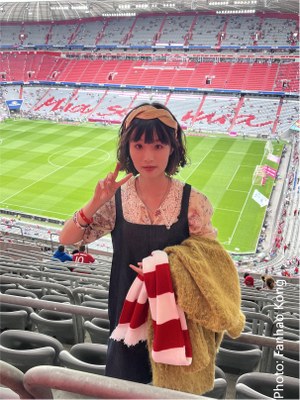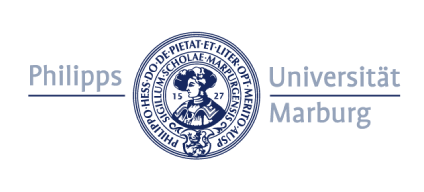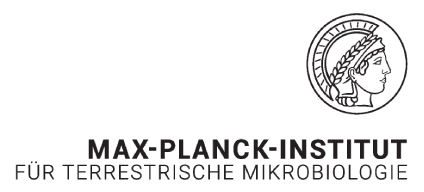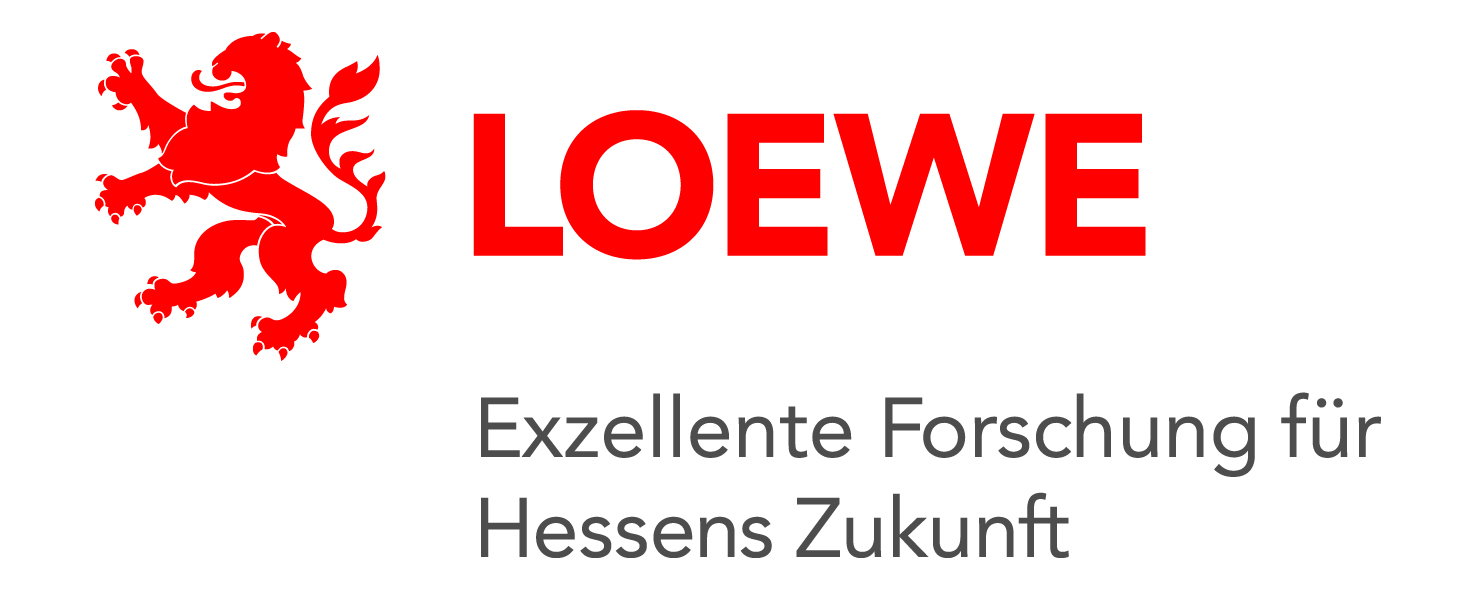Main Content
Our Research Groups
Project area A: Spatiotemporal dynamics of oak’s bacterial leaf microbiota

Project A1: Spatial and temporal monitoring of leaf and tree status, and environment (Jörg Bendix's lab)
Contact: Fanhao.Kong@geo.uni-marburg.de
The main goal for my project is to do hyperspectral characterisation of leaf traits, microbiome diversity/abundance, as well as to monitor the abiotic environmental gradients for local crown climate and leaf microclimate. For this purpose, I use the hyperspectral cameras, climate tower and leaf climate sensors to collect data, then integrate machine learning models to capture the relationships between leaf traits, microbiome and environmental gradients.

Project A2: Spatial and temporal monitoring of the leaf microbiome (Robert Junker's lab)
Contact: Annabell.Wagner@biologie.uni-marburg.de
My contribution to this project will be the characterization of the epiphytic bacterial oak leaf microbiome on micro- and macroscopic spatial and temporal scales such as the identification of abiotic and biotic factors, which influence its structure. For this purpose, we use DNA Sequencing techniques to analyze bacterial communities and design experiments to test bacterial reactions to abiotic and biotic factors. The data will be combined within the projects to discover all-over patterns related to community composition.

Project A3: Library of cultured representatives of the leaf microbiota (Anke Becker's lab)
Contact: Fiona.Ullmann@synmikro.uni-marburg.de
My main contribution to the Tree-M project will be the cultivation and isolation of the bacteria found on the leaves of Quercus robur. The resulting library will enable the characterization of these bacteria and the investigation of the functional role they play in the microbial community of epiphytic bacteria living on the oak tree.
Project area B: Bacterial adaptation strategies to the oak phyllosphere

Project B1: Biosynthesis of secondary metabolites by leaf microbiota (Helge Bode's lab)
Contact: QiQi.Zhang@mpi-marburg.mpg.de
Within this project, more than 40 strains of bacteria were isolated from oak leaves and fully sequenced, and several novel biosynthesis gene cluster for the production of putative natural products (NPs) were identified in their genomes. Now, we would like to identify the NPs from these bacteria. Either from bacteria grown in the lab and/or when grown directly on the leaf using imaging mass spectrometry. Selected biosynthetic gene clusters will be heterologously expressed in suitable production hosts like E. coli and/or will be activated in the original producer via exchange of the natural against inducible promoters. Desired NPs will then be isolated by preparative HPLC/MS, their structures will be solved by NMR and MS, and their bioactivity will be determined.

Project B2: Carbon metabolism of bacterial leaf microbiota (Tobias Erb's lab)
Contact: Changqing.Liu@mpi-marburg.mpg.de
I am responsible for project B2: Carbon metabolism of bacterial leaf microbiota. For this purpose, we will isolate methanol- and isoprene-degrading bacteria and investigate their related enzyme such as methanol dehydrogenases and isoprene monooxygenases. In addition, genome editing will be used to study how the bacteria regulate isoprene oxidation, which will help us to understand the relationship between leaf, microbe and isoprene emissions, and thus the impact of oak trees on the atomosphere and humans.

Project B3: Nitrogen fixation by diazotrophic bacteria of the leaf microbiota (Johannes Rebelein's lab)
Contact: Grgo.Marijan@mpi-marburg.mpg.de
Hi, my name is Grgo, and I am studying the “Nitrogen Fixation by Diazotrophs in the Leaf Microbiome.” My research aims to determine the extent to which diazotrophs impact the growth and physiology of the oak tree (Quercus robur). To achieve this, I isolate bacteria that express nitrogenase genes and analyze their biochemical properties, particularly their oxygen tolerance. Additionally, in mesocosm experiments, I plan to modify the microbiome of oak plants with nitrogen-fixers to investigate any growth effects these diazotrophs may have on the host plant.

Project B4: Resource-dependent regulation of bacterial primary and secondary metabolism (Jan Schuller's lab)
Contact: Schulles@staff.uni-marburg.de
With oscillating light during the daily cycle also the nutrition availability in the phyllosphere changes. How do bacteria on oak leaves adapt their metabolism to this? To answer this question, we would like to unravel the detailed mechanism of the Kai proteins from Methylobacteria – homologues from the circadian clock proteins in photosynthetic bacteria. We employ cryoEM as a powerful tool to solve the structure of varying states of Kai-complexes to gain insight into their mechanism of action.
Project area C: Interactions between microbiota and the oak leaf habitat

Project C1: Intraspecific, intraindividual and temporal variation of leaf traits (Lars Opgenoorth's lab)
Contact: Susanne.Walden@biologie.uni-marburg.de
Within this project, I will investigate to what extent structural, biochemical, and physiological properties of oak leaves can be predicted by (micro-)environmental conditions within the canopy and how these leaf traits affect the diversity and functions of the phyllosphere microbiome.

Project C1: Intraspecific, intraindividual and temporal variation of leaf traits (Lars Opgenoorth's lab)
Contact: e.martine@biologie.uni-marburg.de
The phyllosphere microbiome is usually perceived from a bacterial point of view. Bacteria can aid plant health by suppressing pathogens and enhance plant growth via nutrient acquisition. However, community assembly of bacterial strains is most likely governed by bacterivore protists, a large group of unicellular eukaryotes, finally determining the (dys-)functionality of the whole community. I aim at disentangling the assembly process of leaf-dwelling bacteria and protists on oak over the course of the growing season using co-occurrence networks. Besides, I will measure plant performance of clonal oaks inoculated with bacteria from sun-exposed and shaded leaves under different light treatments in the presence and absence of protists. Also, I will use fluorescence microscopy to explore and map the oak leaf as if it were a landscape full of habitats for microbial life.

Project C1: Intraspecific, intraindividual and temporal variation of leaf traits (Maaike Bader's group)
Contact: xiangbo.yin@uni-marburg.de
In this project, I will investigate various functional traits of oak leaves and determine their associations with environmental variables and phyllosphere microbial community structure. Additionally,we will design a lab experiment to study interactions between functional traits and phyllopsphere microbiota, which will shed light on how microbiota assist host plants in adapting to environmental stressors and elucidate the role of functional traits among and within leaves in determining the community structure of epiphytic microorganisms.

Project C2: Leaf characteristics, metabolome, and herbivory (Nina Farwig's group)
Contact: Anjaharinony.Rakotomalala@biologie.uni-marburg.de
My research aims to assess how abiotic factors, phyllosphere microbiome, leaf traits and metabolomes influence herbivory in pedunculate oak trees in forest ecosystems. The results of my research will provide insights into the defense mechanisms of oak trees against arthropod herbivores, particularly in the time of expected increase of herbivory pressure due to global warming.

Project C2: Leaf characteristics, metabolome, and herbivory (Nina Farwigs's group)
Contact: Tobias.Mueller@biologie.uni-marburg.de
Within the Tree-M project my role is to develop an automatic image analysis pipeline. My expertise lies in the confluence between biology and novel computer science methods. I will use modern computer vision and artificial intelligence techniques to develop a system to qualify and quantify the effects of herbivory and pathogens on Quercus robur leaves. At the same time, these findings will be related to the leaf characteristics and metabolome of the tree leaves. In doing so, I hope to decipher the mysterious picture behind these exciting interactions of nature pixel by pixel.

Project C3: Consequences of changes in microbiota for leaf traits, metabolome, and herbivory (Robert Junker's group)
Contact: Lucy.Saueressig@biologie.uni-marburg.de
Within the project, I will investigate the relationship between microbial resistance, leaf characteristics and herbivory. In this regard I will test the resistance of sun and shade leaves to radiation stress and analyze how bacterial strains influence leaf traits and herbivory. Further, I will design synthetic bacterial communities to functionally modulate the leaf microbiome.
Cross-section project D: Data management platform

Data Analyst
Contact: Lisa.Bald@geo.uni-marburg.de
My main contribution to this project will be the processing, integration, and standardization of various experimental data and metadata collected across spatial and temporal scales. For this purpose, we will consolidate the extensive datasets from Tree-M into a shared research data management platform.

Computer Scientist
Contact: Kristian.Peters@computational.bio.uni-giessen.de
Within the project, I am integrating the domain-specific data generated in the project in a generalized FAIR research data management platform, including secure data storage, provenance and (meta)data management. To compare results across domains, I am coordinating and also working on data analysis workflows using standardized reproducible cloud-based tools and workflow management systems.


